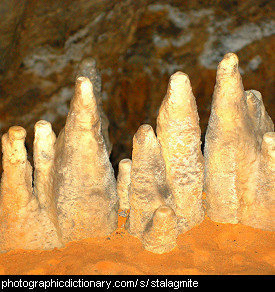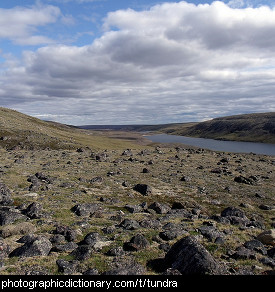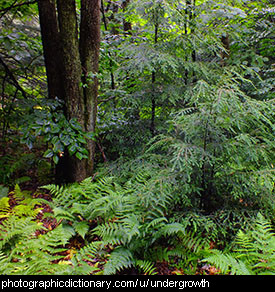Sis forStalagmite
Stalagmites grow up from the floor of a cave as water with a lot of dissolved minerals drips from the cave ceiling. Where the water drips from a stalactite forms. Stalagmites are typically shorter and fatter than stalactites.
A swamp is a large area that is usually under still, shallow water, although it is likely to have lots of small bits of dry ground sticking out of the water. The water of a swamp may be fresh or salty.
Swamps are full of creatures like frogs and crocodiles.
The tides are the rising and falling of the sea because of the pull of the moon and sun on the oceans.
The depth of the water near the coast can change by several metres between high tide and low tide. At low tide a beach may have much, much more sand exposed than at high tide.
The beach in the picture is at low tide. You can clearly see the dark mark on the jetty posts where the high tide comes to.
Uis forUndergrowth
A volcano develops where parts of the Earth's outer crust are either coming together or pulling apart. Many of these places are deep under the sea, but some are on land. The most distinctive volcanoes are cone-shaped mountains made of ash and lava, like the volcano in the picture.
Volcanos can be very dangerous and erupt without much warning. The area around them can be prone to earthquakes, and water that flows from the ground near them can be very hot - called hot springs. When a volcano erupts, molten rock and ash can be thrown huge distances, and can even bury an entire town.














